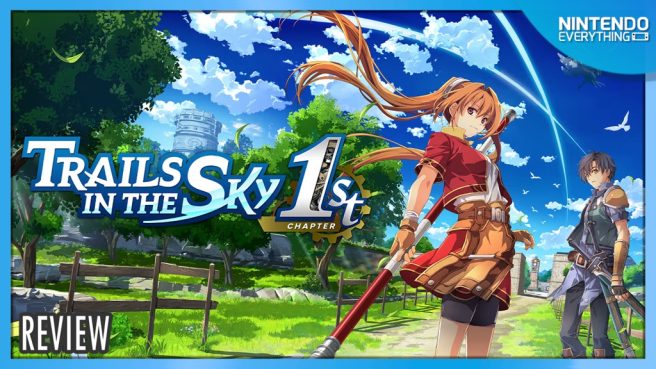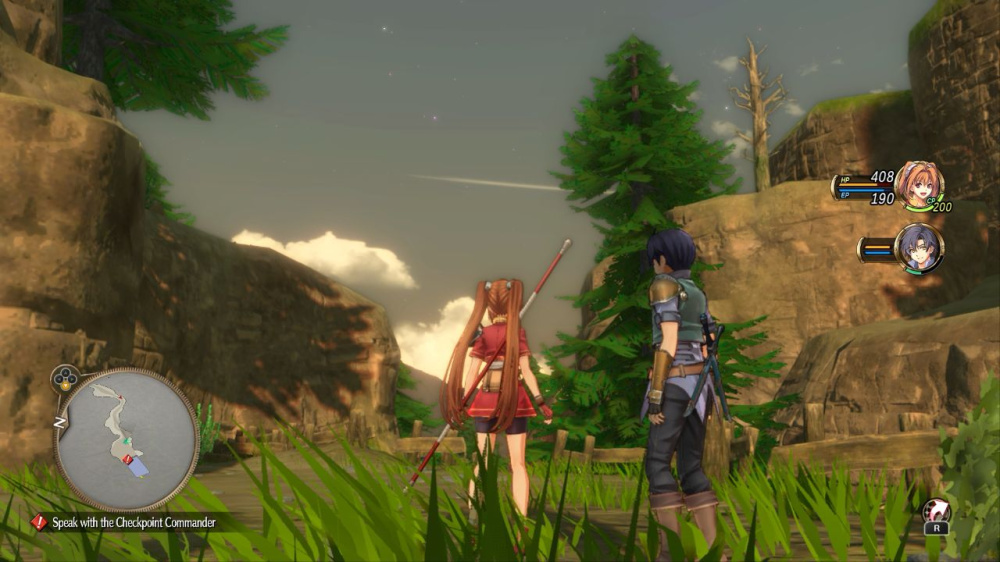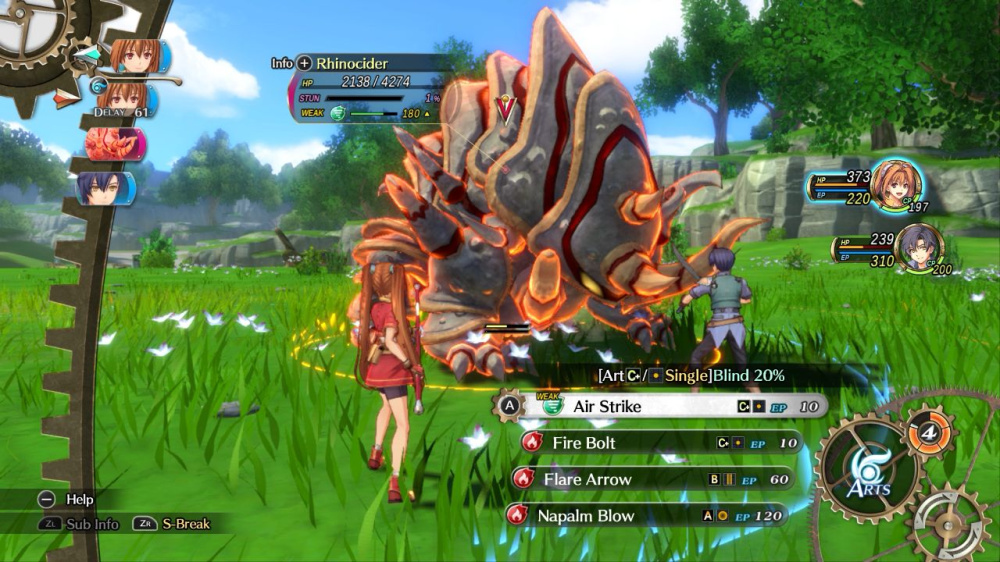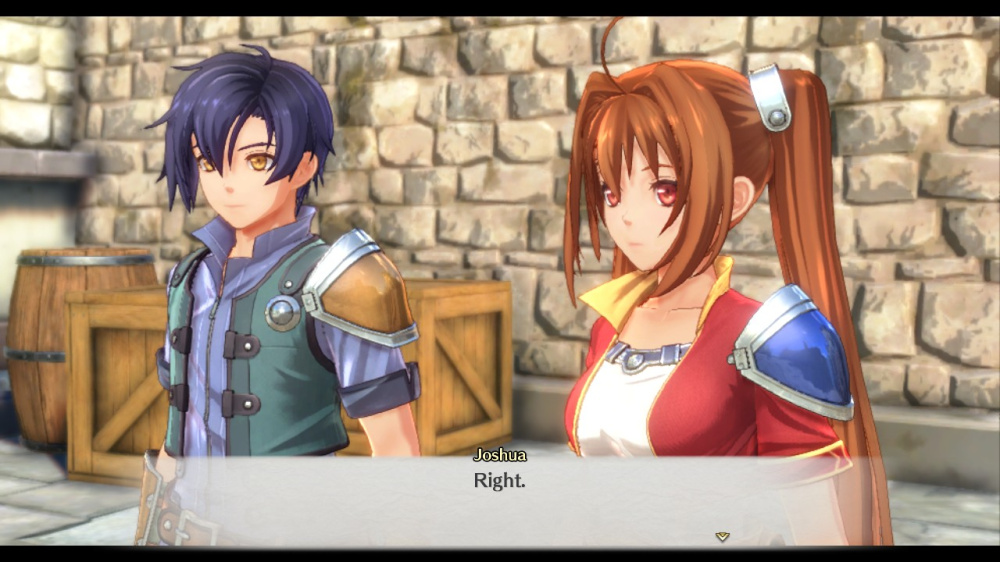Trails in the Sky 1st Chapter review for Nintendo Switch
System: Switch 2, Switch (reviewed)
Release date: October 9, 2025
Developer: Nihon Falcom
Publisher: GungHo Online Entertainment
It’s safe to say at this point that Falcom’s beautifully interwoven Trails series is a hit among RPG players. Trails in the Sky originally saw release in 2004 in Japan, but wouldn’t arrive for western audiences until 2011, a full seven years and four games later, be mindful. In a series of games that is currently thirteen titles long, Trails in the Sky 1st Chapter arrives at a pivotal point. We have a jump in graphics, a rehash of mechanics, and plenty of beefy consoles to experience it on. Does the game play well on the original Nintendo Switch? Does the game hold up to the original experience?
If thirteen games sounds a little daunting and you’re still on the fence about whether or not to dive in, let me offer you a gentle nudge: this is a mastery-level work in terms of RPG stories. We can split hairs over gameplay, mechanics, collectibles and more all day, but I will proudly tell you at start of this review that the narrative alone will draw you right in, and the rest should easily make you stay. This is wonderfully woven tapestry of adventure, and I hope you’ll take the plunge and come along on the journey.
Our story begins with the young Estelle and Joshua Bright, the daughter and foundling adopted son of the famed hero Cassius Bright. With their father’s lofty accomplishments spurring them forward, the duo sets out to become members of The Bracers Guild: an adventurer’s guild of sorts that solves local issues and generally assists the area. A little effort and some exposition later and we are Junior Bracers and we’re going on our first jobs with our really cool mentor Scherazard and our dad is off on his own trip out of town.
What unfolds from this point is a slow burn of story. This feels like the open fields and sense of adventure that you find in Final Fantasy 5 for quite some time, but as the plot begins to unravel and political intrigues find their way in, it deepens in a way that hooks you right in. Coupled with an entire entourage of characters that all feel very alive and real and and actual progression in character development – well, you see now why I said “tapestry” before, as we’ve got all these little threads now.
Story aside, for the sake of spoilers for our newcomers–Let’s get into what else 1st Chapter has to offer us. This iteration has an entirely revamped UI, and a few quality of life improvements that I absolutely adored. Trails games have a habit of there being quite a lot of dialogue, quite a lot of side quests, and quite a lot of things that you can accidentally miss if you don’t complete certain things at certain points in the story. Couple this information with the fact that Trails titles generally allow you to move over Clear Data that remembers your quests completed and the like, and well, you can now understand why I absolute adore that there are dedicated markers on your brand-new mini map that mark things you should definitely be checking out before skittering off to the next main story point.
Battle speed, quick fast travel, easy skip controls for cut scenes, and a completely revamped battle system also await the returning player. We have two separate approaches to combat: a real-time action style, and a more turn-based tactical style. These systems work in tandem to allow you to debilitate enemies before focusing in on the strategic combat through the use of your various toolkits. I say various, because although combat flows amazingly well and is simple to execute, it’s rather hard to explain the amount of systems you’ll be utilizing to manage your characters, skills, and magic, and equipment. The good part is that all of these work together incredibly well and once you get a knack for strategy, you’ll be making short work of enemy parties without much fuss.
Orbment devices are pieces of equipment that our party members use throughout the series, and they deploy a Final Fantasy 7 materia-style system where you can slot them with Quartz for various abilities and effects. These Quartz all have elements and skills and all manner of things attached–and they’re redeemed and upgraded via sepith, a mineral resource you’ll be needing quite a lot of that can be collected by defeating the various creatures you can encounter around Liberl. You’re going to need a lot of it, so running from fights would just be silly. While I never really found the need to grind encounters for leveling, there were times I did want to make sure to reach a treshold on sepith. I did find myself having too easy of a time after unlocking certain Quartz, so I ramped the difficulty up a notch and everything went back to being a lot of fun. I would repeat this process a second time after unlocking more Orbment slots.
So we are gaining these elemental sepith minerals after each fight, we are converting these into Quartz or even upgrading our Quartz, which we put into our Orbment equipment. Orbment equipment can have multiple slots, which you’ll be able to upgrade as you progress throughout the game. One thing I do want to make sure to mention is that you should be prioritizing Joshua and Estelle first for these upgrades, as they will be more permanent fixtures in your party, but once you get further in the game this will matter less. When slotting Quartz into your Orbments, you can choose from a variety like Evade, Mind, or Defense. Each of these costs a different blend of sepith to purchase, and then can be further enhanced for yet more sepith, resulting in more powerful effects. Setting your characters up with different combinations of Quartz is important to maximize your effectiveness, but there’s another reason to be picky about which combinations of Quartz you insert into which Orbments: some of the builds you can make become absolutely insane.
An early game combo I had for Joshua was equipping Action 2, Attack 2, and Hit 2 Quartz into his Orbment. This was the first point where I decided that upping the game’s difficulty would be necessary, and while my build for Joshua felt fast and almost crazy at times, the flow of combat was incredibly satisfying and felt amazing to execute Arts, chain attacks from action combat into turn-based, and the other myriad moves you can pull off with a full party and a kitted out team. To say that I found combat incredibly satisfying would be doing it a disservice. As I gained levels, invested in my Quartz and optimized my spread of abilities across my characters my enjoyment of the fighting aspect only increased.
One area where I will note that the original Nintendo Switch hardware suffers is graphically. The game shows jagged edges for character models in gameplay, but this sacrifice seems to have been made in order to keep combat fluid. Personally I find this concession to be a worthy one: I don’t play Trails games for the graphical performance, I play Trails games for literally everything else. The fighting aspect not feeling clunky, the clean and vibrant art in the games menus, and the well-rounded voice acting more than make up for fuzzy character models, but I am willing to admit that this may not be something that others can overlook.
Worldbuilding in Trails in the Sky 1st Chapter is a large part of the masterful tapestry we mentioned earlier. Every story point you reach, the world around you reacts in turn. The townspeople you talk to will have new dialogue near constantly, and simple NPCs that you interact with on a regular basis almost become real known people as you advance through the game. They seem to update and react in real time along with the story in a way that I have not seen done in another RPG series, and the commitment to making Liberl feel like a thriving and lived-in world is easily felt. Liberl itself becomes immersive.
I became invested in the people and invested in the community that my footsteps fell upon. Every task and adventure brought Joshua and Estelle closer to becoming the best Bracers they could be, but also brought them through challenges and tribulations that end up making them face parts of themselves that would end up causing them to divide. What we end up seeing here is the start of a story of growth where the naivety of youth and the pain of a dark past clash – and while the journey that needs to be undertaken is a hard one, its one they still choose to face. This story is presented beautifully for a modern audience, and while there is still so much more to go, I am hopeful that those who have been worried about investing in a game series that is literally thirteen games long at this moment in time, might feel inclined to dip a toe in.
Not only is Trails in the Sky 1st Chapter a wonderful remake, but it makes an astoundingly good entry point for those new to the series. Everything about Trails in the Sky is an intense and emotional slow burn. The story’s reveal has twists and turns that new players will enjoy for the very first time, and whether that gives us more of an audience to await the 2nd Chapter, or even adds to the swell of players going back and playing older entries to the series while they wait, I will say this: everything Nihon Falcom touches appears to slap very hard. It has never been a better time to be a Trails fan.
Trails in the Sky 1st Chapter copy provided by the publisher for the purposes of this review.




